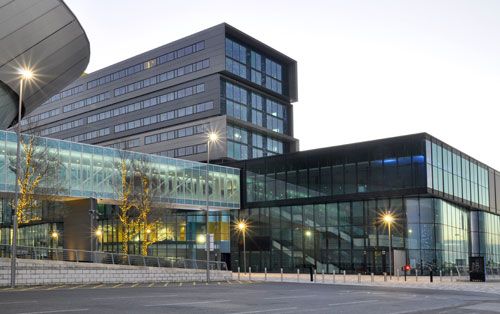
 Saint-Gobain Building Glass has launched its most recent product innovation for the commercial glazing market with a new addition to its popular SGG Cool-Lite Xtreme solar control range.
Saint-Gobain Building Glass has launched its most recent product innovation for the commercial glazing market with a new addition to its popular SGG Cool-Lite Xtreme solar control range.
SGG Cool-Lite Xtreme 50/22 II is a high-quality solar control glass, with ‘the unique positioning of being the most selective triple silver product available on the market’. With a selectivity of 2.24 – the best available in Europe according to Saint-Gobian – SGG Cool-Lite Xtreme 50/22 II is said to enable designers and specifiers to create comfortable working environments with high levels of natural daylight but without the overbearing heat of the sun. It also reduces the need for ‘costly and energy-hungry’ air conditioning systems and can therefore reduce a building’s carbon footprint.
The product delivers a high light transmittance (47%) to allow a good amount of natural daylight to illuminate a room, combined with a low solar factor of only 0.21, which blocks 79% of the sun’s heat. It also delivers a low centre pane thermal insulation of 1.0W/m2K, maximising heat retention within the building.
According to Saint-Gobain, SGG Cool-Lite Xtreme 50/22 II in a commercial building can contribute towards a building’s BREEAM points and boost the overall BREEAM rating.
Exhibition Centre Liverpool is the first UK project to fully utilise the high-performance coating and features the product across the full length of its glass facade.
Saint-Gobain Building Glass commercial market manager, Adrian Adams said: “SGG Cool-Lite Xtreme 50/22 II is a fantastic addition to our range of solar control products. The coating has a good level of neutrality and low external reflectance, giving the glass excellent aesthetics. This new product provides architects with another tool in their design armoury to produce striking facades for their clients without compromising on high performance solar control protection.
“We believe that we have pushed the boundaries again with the product’s market leading selectivity and are sure it will have a substantial impact on the architectural concept and design of the façade due to the fact that architects may not have to work with external shading devices.”



